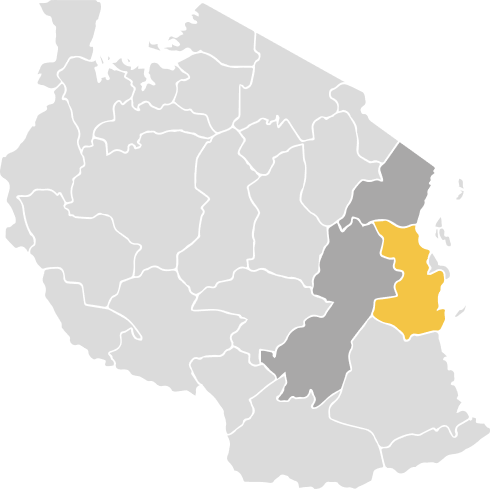Why hub in Tanzania?
Located in East Africa, Tanzania provides great opportunities to develop inclusive sustainable energy - development models through its commitment towards poverty reduction, social protection and overall developmental agenda. Tanzania also has a history of alternative community based ownership models particularly those rooted in cooperatives. Initial scoping and pilot programs with local partners have shown the importance of decentralized energy solutions in the development of local economies, especially from the smallholder agriculture and microbusinesses perspective. With a strong presence of local partners who champion the development of local ecosystems for sustainable energy access, Tanzania provides a great opportunity to establish the East Africa Hub.
Approach :
Full Ecosystem deep dive
Quick Snapshot
56 M
Population
$1050
GDP per capita
154/189
HDI Rank
Tanzania (within East Africa Region)

Program Summary
To identify and nurture the capacities of local Tanzanian energy enterprises to deliver last mile energy solutions that improve quality of life and other development for underserved communities of Tanzania.
Increased understanding around energy access and its relation to other development themes. Moving beyond a technology centric understanding of energy supply for the poor. Increased knowledge about strategies to balance social and commercial Increased understanding around energy access and its relation to other development themes. Moving beyond a technology centric understanding of energy supply for the poor.
Why hub in Sierra Leone?
Located in the West coast of Africa, Sierra Leone has been a great example of resilience, not just for the region, but for the entire continent. Standing strong against exogenous shocks such as Ebola, the country has shown practical examples of inclusive models. The agricultural sector is the backbone of Sierra Leone’s economy, with smallholder farming being the major livelihood option. Some of the focus value chains for the program (cross-regional relevance, presence of strong local experts, etc) such as rice, millet, sorghum are the priority value chains of the country. Along with livelihoods, strengthening last-mile healthcare the other critical thematic nexus of energy-healthcare would have great relevance too in the country.
Approach :
Full Ecosystem deep dive
Quick Snapshot
7.6 M
Population
$534
GDP per capita
181/189
HDI Rank
Sierra Leone (within West Africa Region)
Partner: The Energy Nexus Network
To develop and strengthen local ecosystems around sustainable energy that would catalyse the delivery of solution to the underserved communities in Sierra Leone in primary areas of development through anchor organization (TENN) and a strong network of local champion stakeholders.
More details to be updated soon.
Why hub in Ethiopia?
Being one of the fastest growing economies with a young population, Ethiopia offers a unique opportunity to build templates of development models that create strong local economies. As a regional hub with contextual similarities shared between other hubs, Ethiopia can provide critical learnings in sustainable energy - agriculture, SME nexus through implementation programs with local stakeholders. With its geographic presence in Horn of Africa and a strong network of local partners, the cross-learning support it could provide to surrounding geographies would be critical as well.
Approach :
Full Ecosystem deep dive
Quick Snapshot
109 M
Population
$772
GDP per capita
173/189
HDI Rank
Ethiopia (within Horn of Africa)
Partner: Precise Consult
To develop and strengthen local ecosystems around sustainable energy that would catalyse the delivery of solution to the underserved communities in Ethiopia in primary areas of development through anchor organization and a strong network of local champion stakeholders.
More details to be updated soon.
Why hubs in Philippines?
With a population of more than 100 million and being one of the highly vulnerable geographies from a diverse range of climate-related hazards, the Philippines stands as one of the most critical countries to develop inclusive development models. Its archipelagic nature and vulnerability to climate change make infrastructure development difficult, including energy infrastructure, thus providing meaningful opportunities for decentralized sustainable energy solutions. The focus region, Mindanao island, which is the hub for agriculture, still faces a high poverty incidence. With learnings from the previous programs in renewable energy with collaborative actions among different stakeholders, such as grassroots partners, local governments, financial institutions, businesses, and technical providers, Mindanao island offers opportunities in developing models to democratizing access, affordability and availability of social services, and as a means for poverty alleviation.
Approach
Full Ecosystem deep dive
Quick Snapshot
100M
Population
$3102
GDP per capita
106/189
HDI Rank
Philippines
Partner : Ramon Magsaysay Transformative Leadership Institute and Peace & Equity Foundation
The major efforts in Philippines is towards developing a coordination hub in Mindanao that will help push for the shift towards renewable energy in the region for use in poverty alleviation, a hub that can be adapted or replicated to analogous contexts in other countries in the region.
Objectives
• To mine the history of Mindanao-based renewable energy projects and policy environment to identify areas for policy advocacy; • To create a multi-stakeholder network of renewable energy players who can engage in policy advocacy; • To build the foundation of a regional hub that will create collaboration among local partners, facilitate productive transfers of local knowledge, and catalyze program designs for implementation of pro-poor sustainable energy solutions.